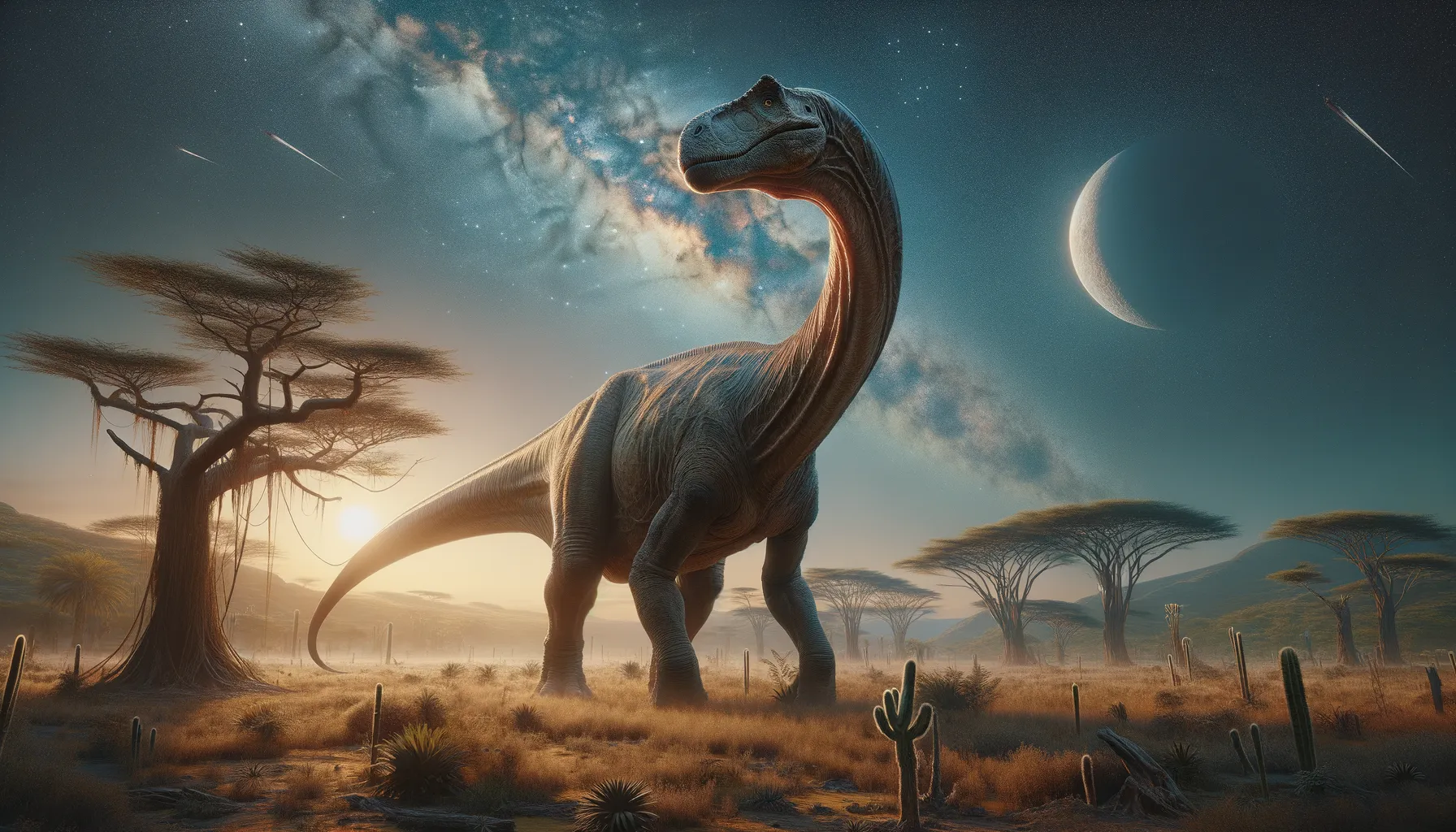
Australodocus
A gentle giant of the Jurassic era.
Period
Jurassic
Length
Measured approximately 15 meters long.
Height
Stood about 8 meters tall.
Weight
Weighed around 15,000 kilograms.
Australodocus was a long-necked dinosaur from the late Jurassic period. It belonged to the sauropod family, known for their enormous size and herbivorous diet. Discovered in Tanzania, it shared traits with other giant dinosaurs, yet possessed unique characteristics that are still under study. As a relatively recent discovery, Australodocus has provided new insights into the diversity of sauropods in Africa during the Jurassic period.
Diet
Australodocus was herbivorous, feeding primarily on plants. With its long neck, it could reach leaves on tall trees and shrubs, giving it access to a variety of vegetation. Like other sauropods, it likely consumed large amounts of plant material daily.
Hunting
Australodocus did not hunt as it was a plant-eater. Instead, it foraged for food in its environment using its height advantage. Its focus was on gathering vegetation rather than engaging in predatory behavior.
Environmental challenges
Living in the Jurassic period, Australodocus faced shifting landscapes and climate changes that affected its food sources. It needed to navigate through vast areas to find sufficient vegetation to sustain its large body size. Droughts or other natural occurrences could have posed challenges in securing enough daily nutrients.
Speed
Relatively slow-moving.
Lifespan
Estimated to be several decades.
First discovery
Discovered in Tanzania in 2007.
Fun Facts
- Australodocus was a long-necked dinosaur that lived during the Late Jurassic period, around 150 million years ago.
- This dinosaur was discovered in Tanzania, which shows that these gigantic creatures roamed not just the Americas, but also parts of Africa.
- Australodocus was part of the sauropod group, known for their massive sizes and long necks and tails.
- Unlike some of its famous relatives like Brachiosaurus, Australodocus is believed to be smaller and more lightweight.
- The name 'Australodocus' means 'southern beam' because it was found in the Southern Hemisphere.
- Researchers are still piecing together Australodocus's lifestyle, trying to understand if it was migratory or stayed in one area.
- Fossils of Australodocus are rare, making it a bit of a mystery and an exciting topic for paleontologists to study.
Growth and Development
Australodocus grew rapidly in its early years to reach its massive size. As with other sauropods, effective skeletal development was crucial, likely supported by a rich diet. Detailed study of fossilized bone structures can provide insights into growth patterns.
Habitat
Australodocus inhabited regions that were likely rich in vegetation, essential for its herbivorous lifestyle. Its habitat included floodplains and forested areas where it could find ample food. Such environments would have supported both its nutritional needs and provided safe environments for breeding and nurturing young.
Interaction with other species
As a large sauropod, Australodocus may have coexisted with other sauropods, competing for food. The presence of predators in its ecosystem meant that it relied on its size for protection rather than agility. Other herbivores in the area might have helped in clearing paths through dense foliage.
Natural lifespan
Its natural lifespan was likely several decades, similar to other large sauropods.
Reproduction
Australodocus, like other sauropods, laid eggs. Reproductive strategies likely included nesting in safe areas and possibly selecting warmer sites to aid with incubation. Fossil evidence can provide clues about its reproductive behavior and nesting habits.
Social behaviour
Botop-minded and sociable, Australodocus may have moved in herds, enhancing protection against predators. Such social structures would support the young who could stay within the safety of the group. Communication among herd members might have been crucial for movement and finding food.
Fossil locations
The fossils of Australodocus have been primarily found in Tanzania. These discoveries have added valuable information to the understanding of Jurassic fauna in Africa. The specific excavation sites offer a glimpse into the ecosystem that supported such large sauropods.
